By Catholic News Service
WASHINGTON – Four new awardees were named this year as recipients of People of Life Awards, chosen by the U.S. bishops’ Secretariat for Pro-Life Activities for lifetime contributions to the pro-life cause.
Honored at a July dinner for diocesan pro-life leaders and their guests, Mary Huber, Barbara Lyons, Greg Schleppenbach, and the late Laura Jean Ebert joined 37 other recipients since the secretariat established the award in 2007.
The award recognizes Catholics who have answered the call outlined by St. John Paul II in his 1995 encyclical “The Gospel of Life” by dedicating themselves to pro-life activities and promoting respect for the dignity of the human person. It is bestowed in honor of their significant and longtime contributions to the culture of life.
Huber spent her 24-year career in pro-life ministry at the Diocese of San Bernardino, California, beginning as a part-time bookkeeper and ultimately becoming the director of Respect Life and Pastoral Care for the diocese’s Department of Life, Dignity and Justice.
Huber worked closely with the California Catholic Conference of Bishops advocating for life-saving protections for unborn children, women, and teen girls at risk for abortion and the elderly at risk for assisted suicide.
She launched the first diocesan Project Rachel program, coordinating training for priests and volunteers and providing bilingual phone counseling as well as abortion healing retreats in English and Spanish.
Huber also facilitated mental health programming in parish ministries, particularly for those wounded by abortion, or struggling with end-of-life care. She ultimately developed comprehensive programs to provide educational resources for accompanying the dying during their final journey.
Lyons began pro-life work in 1974 as volunteer president of the Milwaukee County chapter of Wisconsin Right to Life. She joined the staff of Wisconsin Right to Life in 1977 where she served as legislative director for 10 years, becoming executive director in 1987.
She also led educational outreach through the Veritas Society media campaign and teen and college training programs.
She “retired” from Wisconsin Right to Life in 2014 after 40 years of work in the pro-life movement, yet in her 70s, she was asked to serve as coalitions director for the Patient’s Rights Action Fund. She has worked tirelessly into her 80s to prevent vulnerable persons from being targeted by assisted suicide.
Schleppenbach has dedicated his career to pro-life advocacy. He directed the pro-life office at the Nebraska Catholic Conference from 1991 to 2014 and served as Nebraska Catholic Conference’s executive director for two years.
From 2016 to 2022, Schleppenbach was associate director for the U.S. bishops’ Secretariat of Pro-Life Activities. He is currently the executive director for the Culture Project, a missionary organization providing education and mentorship for teens on the issues of human dignity and sexual integrity.
Ebert, who passed away in 2021, spent her life in dedicated service to the Catholic Church and the pro-life movement. She helped establish pro-life pregnancy centers in Arkansas, Oklahoma, Texas and Canada. She also served as a housemother at a maternity home in Arkansas.
She was also passionate about Catholic education and worked for many years as a teacher in Illinois. She continued her leadership in compassionate service to women and children at pregnancy care centers near her home of Menominee, Michigan, until her death at age 73.
Updates
With Roe overturned, march will focus on Congress, laws to end abortion
WASHINGTON (CNS) – The U.S. Supreme Court’s reversal of Roe v. Wade “is, without question, an answer to prayer,” but in a post-Roe world, “Catholics must now work together for another, even deeper paradigm shift,” said the U.S. bishops’ pro-life chairman.
“We must move beyond a paradigm shift in the law in order to help the people of our nation better see who we can be as a nation by truly understanding what we owe to one another as members of the same human family,” said Baltimore Archbishop William E. Lori, chairman of the U.S. Conference of Catholic Bishops’ Committee on Pro-life Activities.
“To build a world in which all are welcome,” he said, Catholics “must heed” the words of St. Teresa of Kolkata “and remember ‘that we belong to one another.'”
“We must shift the paradigm to what St. John Paul II described as ‘radical solidarity,’ making the good of others our own good, including especially mothers, babies – born and preborn – and families throughout the entire human lifespan,” Archbishop Lori said.
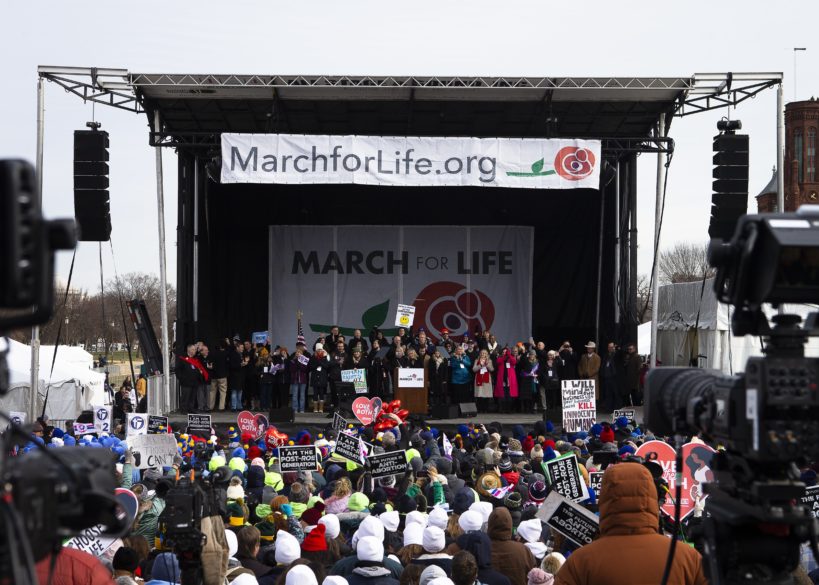
He made the remarks in a Sept. 21 statement for the U.S. Catholic Church’s observance of Respect Life Month, which is October. The theme of the observance is “Called to Serve Moms in Need.”
The first Sunday of October is designated as Respect Life Sunday, which is Oct. 2 this year.
In their June 24 ruling in Dobbs v. Jackson Women’s Health Organization, a majority of the justices ended the court’s nearly 50-year nationwide “regime of abortion on demand,” the archbishop said.
This “regime” was “based on the indefensible view that the U.S. Constitution implicitly forbids government from protecting the preborn child in the womb from the violence of abortion,” he said.
The court “concluded that there is nothing in the Constitution’s text, history, American legal tradition or the court’s precedents that justified the extreme holding of Roe,” he said.
Dobbs was a challenge to a Mississippi law banning abortion after 15 weeks. The court affirmed the law 6-3 and also voted 5-4 to overturn the 1973 Roe ruling, which legalized abortion nationwide, and 1992’s Casey v. Planned Parenthood ruling, which affirmed Roe.
The ruling returned the issue of abortion to the states.
With Dobbs, the high court “cleared the way for a paradigm shift in American law, allowing it to enlarge its boundaries to again welcome a segment of the human family that had been outside of its protections for close to half a century,” he added.
He called Dobbs “a victory for justice, the rule of law and self-governance.”
“But for those of us who have prayed for this moment to arrive, it is the time for a renewal and rededication of our efforts to build a culture of life and civilization of love,” he said. “Justice is, of course, essential to this end. But it is not sufficient.
“To build a world in which all are welcome requires not only justice, but compassion, healing, and above all, unconditional love.”
“Abortion is a gruesome sign of how we have forgotten our mutual belonging,” Archbishop Lori continued. “The logic of Roe v. Wade has framed our national discourse on the issue of abortion as a zero-sum conflict among individual strangers.”
But “mother and child are not strangers; they are already bound together by flesh and kinship,” he said. “The new life that is developing under the heart of the mother is already situated in a network of relations, including family, neighbors and fellow citizens.”
Roe’s logic “offers the woman only the right to see lethal force used against her child, but it otherwise abandons her,” he explained.
But “the logic of the culture of life recognizes that the pregnant woman and her child are not alone – they are fellow members of our larger human family whose interwoven vulnerability is a summons to all of us, but especially Catholics because of the teaching of Jesus and his proclamation of the Gospel of life,” the archbishop said.
To practice “radical solidarity and unconditional love in a post-Roe world,” he said, means speaking and living the truth” with compassion – the truth that abortion not only “unjustly kills a preborn child, but also gravely wounds women, men, families and the nation as a whole.”
Through law, policy, politics and culture, society must do whatever it can to provide mothers, children and families in need “with the care and support necessary for their flourishing throughout the entire arc of life’s journey,” he said.
“Building a world in which women are esteemed, children are loved and protected, and men are called to their responsibilities as fathers, requires us to understand and address the complex and tragic tangle of affliction and strife that culminates in the violence of abortion,” Archbishop Lori said. “This is a massive and daunting undertaking.”
“Catholics already have a strong foundation in the church’s centuries-long encouragement of parental and societal duties,” he said. “Millions of individual Catholics from all walks of life are already personally endeavoring to build the bonds of solidarity and compassion throughout our society.”
Many also are engaged in parish and community initiatives such as pregnancy resource centers, post-abortion counseling, he said, as well as Walking with Moms in Need, an initiative of the U.S. bishops to connect pregnant women and their families with parishes and to a growing network of resources.
(Editor’s Note: The full text of Archbishop Lori’s statement and Respect Life Month materials from the USCCB’s Secretariat of Pro-Life Activities can be found online at https://www.respectlife.org/respect-life-month.)
Featured photo …Engaged Encounter…
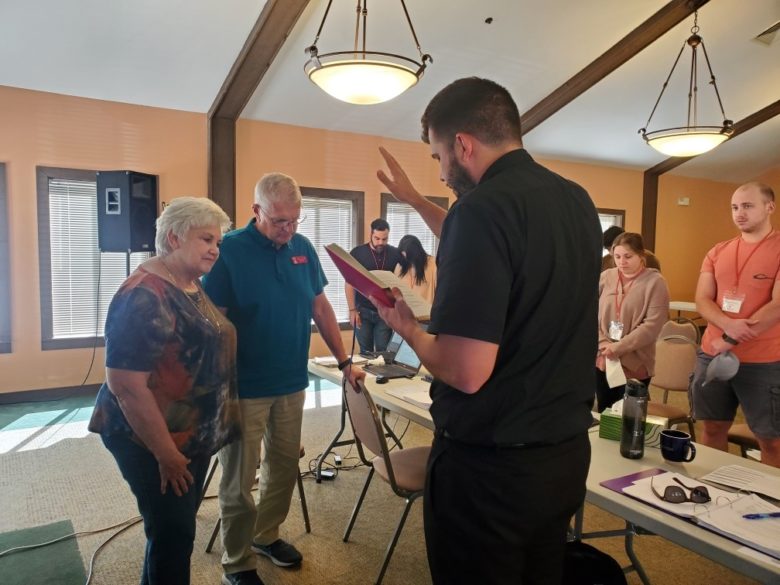
Calendar of events
SPIRITUAL ENRICHMENT
GREENWOOD Locus Benedictus, “The Prison, the Warden and the Key to Freedom” event, Saturday, Nov. 5, 9 a.m. to 4 p.m. Featured presenters: “Mercy Beaucoup” – Cindy Scardina, Ann Roshto and Lynn Mondt. All are welcome. Event is free with love offering taken. Details: sign up on facebook, eventbrite or call (662) 299-1232.
PEARL St. Jude, Join the Marian Servants of Jesus the Lamb of God as we consecrate ourselves to Jesus through the heart of Mary. Nov. 1, we begin a 33-day preparation for Marian Consecration as we meet weekly. For six weeks, we’ll individually read about and reflect on four great Marian giants: St. Louis de Montfort, St. Maximilian Kolbe, St. Mother Teresa and St. John Paul II. They’ll teach us the secrets to drawing closer to the Heart of Jesus through the Heart of Mary. We will also pray with scriptures, share the fruits of our prayer and watch a 30-minute video by Father Michael Gaitley, MIC. You do not have to be a Marian Servant to participate. Books available for purchase for $10. We meet at St. Jude’s ‘Mary’ room in the office building on Tuesdays from 1-3 p.m. Details: Maureen Roberts (601) 278-0423 or email msojlog@gmail.com.
TUPELO St. James, Annual Men’s Retreat, Nov. 18-20 at St. Bernard Abbey in Cullman, Ala. Retreat leader is Father Ben Cameron of the Fathers of Mercy. Retreat begins Friday evening and ends Sunday morning. Enjoy this weekend of prayer, rest and fellowship. Cost: $130 if sharing a room or $205 for a private room. Registration includes two nights of lodging, all meals and snacks. Details: David at (662) 213-3742.

PARISH, FAMILY & SCHOOL EVENTS
ABERDEEN St. Francis, Parish Potluck, Saturday, Nov. 5 after 4 p.m. Mass. Sign-up to bring your favorite dish. Details: church office (662) 813-2295.
CLEVELAND Our Lady of Victories, “Taste of Italy” Lasagna Dinner and Bake Sale, Thursday, Nov. 10 from 4:30-7 p.m. Dine-in or take-out from the Parish Center. Tickets are $15 and include lasagna, salad, bread and dessert. Details: church office (662) 846-6273.
FLOWOOD St. Paul, Bingo Night, Friday, Nov. 11. Sponsored by the St. Paul Women’s Ministry, enjoy hotdogs and snacks at 6:30 p.m. and begin bingo at 7 p.m. Cost is $5 per card. For ages 18 and up only. BYOB. Details: church office (601) 992-9547.
JACKSON Cathedral of St. Peter, Organ Series Concert, Nov. 3 at 6 p.m. Details: church office (601) 969-3125.
JACKSON 42nd annual Squat & Gobble, Thursday, Nov. 10 at the Country Club of Jackson. All proceeds help victims of sex trafficking and domestic violence. Details: visit www.friendsforacause.com.
MERIDIAN St. Patrick, 23rd annual Variety Show, Dinner and Fashion Show, Saturday, Nov. 5 in the Family Life Center. Tickets on sale at school or parish office. Reserved $25; adults $10; and children 13 and under $5. Details: church office (601) 693-1321.
NATCHEZ St. Mary Basilica, Annual Cemetery Procession at Natchez City Cemetery on Sunday, Nov. 6 at 2 p.m. Procession begins at the Old Catholic Plot 1. Participants recite rosary to honor burials prior to 1861 as they process to Catholic Hill in the rear of the cemetery. All adults and youth are invited to join. Details: church office (601) 445-5616.
OLIVE BRANCH Queen of Peace, Spaghetti Dinner, Sunday, Nov. 20 at 11 a.m. Dine-in or take-out. Cost: $8 per plate; max $25 per family; $2 smoked sausage; $10 quart gravy; $5 quart slaw. All are welcome! Details: church office (662) 895-5007.
Queen of Peace, Card Night, Friday, Nov. 4 at 6 p.m. in the social hall. The Men’s club will host its semi-annual card night with dinner from 6-6:45 p.m. and cards starting at 7 p.m. All parishioners and their guests are welcome. Signup sheet in commons area. Details: church office (662) 895-5007.
RIPLEY St. Matthew, 1st annual Christmas Bazaar and Photos with Santa, Nov. 18 and 19. Crafters wanted: tables available for $30. Begin making your crafts or preparing for your food booth now. Details: Call Geraldine at (216) 867-8007.
TUPELO St. James, Rummage Sale, Saturday, Nov. 5 from 7:30-11 a.m. in Shelton Hall. Also, tamales for sale: Chicken with green sauce or pork with red sauce $20/doz. Order available for pick-up Thursday, Friday or Saturday of sale. Pre-orders available by calling Raquel at (662) 402-9599. Details: call Kathy at (662) 322-2556.
St. James, Trivia Night, Saturday, Nov. 5 from 7-9 p.m. in Shelton Hall. Register your team at linktr.ee/stjamestupelo – Nursery will be provided. Details: church office (662) 231-1055.
YOUTH EVENTS
DIOCESE SEARCH Retreat – For Teens, By Teen, Jan. 13-15, 2023 at Camp Wesley Pines in Gallman. Details: email abbey.schuhmann@jacksondiocese.org.
SAVE THE DATE
DIOCESE SEARCH Retreat – For Teens, By Teen, Jan. 13-15, 2023 at Camp Wesley Pines in Gallman. Details: email abbey.schuhmann@jacksondiocese.org.
JACKSON St. Richard School, Krewe de Cardinal set for Feb. 10. Call for tickets and sponsorship opportunities. Details: school office (601) 366-1157.
MADISON St. Anthony School, Starry Night Gala, Friday, Dec. 9. Details: school office (601) 607-7054.
OLIVE BRANCH Queen of Peace, Tie Dye for Jesus, Sunday Nov. 13 at 3 p.m. All are welcome. Event begins with an appetizer/dessert potluck. Sign up in the Commons area with your name and shirt size. Donations welcome. Details: church office (662) 895-5007.
The seasons of ordinary time
ON ORDINARY TIMES
By Lucia A. Silecchia
Recently, I enjoyed one of my favorite rites of autumn – the search for perfect pumpkins for home, office, and anywhere else that might be brightened with glorious gourds. In a long drive through quaint corners of the countryside, I relished the splendor that is autumn.
Yes, the pumpkins were the excuse for the journey. But the trip was made more beautiful by the showy splash of autumn surrounding the corn fields gone gray and the farmhouses hung with Halloween wreaths. There was enough of a crisp chill to announce that summer was gone. Yet, the bright sun that bounced off the red, orange and gold in the trees heralded a new season with a loveliness all its own. I rejoiced in the simple beauty of a world made new.
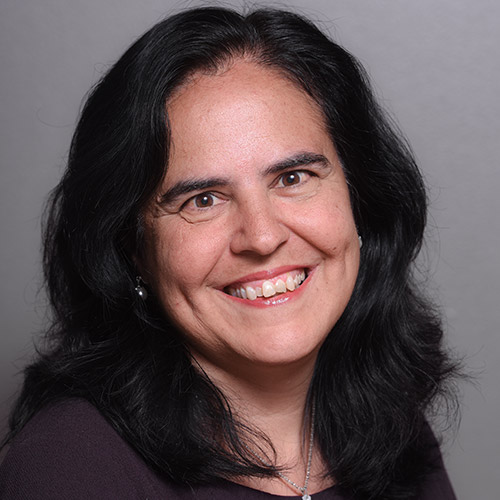
It will not be long until I marvel again when I awaken to the first snow that dusts my city streets. The silent brightness of that blanket, the sound of my neighbors’ shovels that beckons me out of bed, and the hot chocolate I promise myself when I am back inside are all part of a new type of wonder. (I would rather ignore the icy sidewalks and high heating bill that will follow!) In this, I will rejoice again in the simple beauty of a world made new.
Just when the snowy season starts to lose its charms, there will be shy crocuses rising tentatively from the earth, faint traces of green in lawns coming back to life and trees getting ready to burst forth in the lacy splendor of spring. As the days lengthen and the sun grows brighter, I will rejoice again in the simple beauty of a world made new.
While I might, in the fullness of May, doubt that I would ever want to bid farewell to spring, a day will come when the days last long into the night, tomatoes ripen on the vine, and the beach beckons. Summer will hold joys of its own, and yet again I will rejoice in the simple beauty of a world made new.
I am deeply grateful to live in a corner of the world where seasons change around me and every few months life feels different.
Yet, it is not just in the world around us when seasons change. Life, too, has its own seasons.
Some of the people I admire most are those who have the faith and hope that allows them to welcome each new season of life with the same joy I have when I welcome the new seasons of the world around me.
Some seasons of life are filled with excitement and eager anticipation as the start of the adventures of a new school, new job, new home, marriage and parenthood. Some of those that are most important are those we do not remember well, like the transition from infant to toddler. Some are filled with angst – the so-called terrible twos and the terrible teens – and others with peace. Some seasons change of our own volition when we choose a new path. Other seasons come unwelcomed and unbeckoned.
Some are seasons of dreams fulfilled, and others are seasons when a dream moves out of view. There are seasons of suffering and loss that come to each life, and seasons to surrender the things to which we cling. There are seasons that are filled with companionship and those when, for a time, we find ourselves walking alone.
In the depth of our hearts, there are those seasons when we walk closely with God, and other seasons with the taste of the “dark night of the soul.”
As years pass and I look back at the ways in which life’s seasons have changed, I can see that there is, indeed, something to be grateful for in each of them. At the time, some have seemed to me far more beautiful than others. Yet, in their own way, each season of life made my own heart new – whether I wanted it to or not.
I hope that as I watch autumn unfold and winter follows, it will be a reminder to cherish each season of life – to thank God for the blessings it brings, to ask Him for strength through what it may take away, and say a trusting “Amen” to every season of ordinary times.
(Lucia A. Silecchia is a Professor of Law and Associate Dean for Faculty Research at the Catholic University of America. “On Ordinary Times” is a biweekly column reflecting on the ways to find the sacred in the simple. Email her at silecchia@cua.edu.)
Jesus is in the chapel – Really!
GUEST COLUMN
By Sister Constance Veit, LSP
When I was a kid, I was fascinated by magnets. I loved to watch the little magnetic skaters glide across a mirror in our family’s Christmas village at the flip of a switch and I enjoyed doing science experiments with magnets and iron shavings in school.
I recall a comparison Pope St. John Paul II made between the Eucharist and the force of a magnet’s pole.
“The presence of Jesus in the tabernacle must be a kind of magnetic pole attracting an ever greater number of souls enamored of him, ready to wait patiently to hear his voice and, as it were, to sense the beating of his heart,” he wrote just six months before he died.
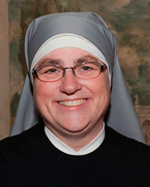
These words of John Paul II came to mind when I heard about the National Eucharistic Revival launched by the U.S. bishops earlier this year. It is a beautiful, powerful image – the idea of Jesus acting as a magnet drawing people to himself in the Blessed Sacrament.
I have begun to ask myself, do I allow myself to be drawn to Jesus in the tabernacle? Do I cling to him the way iron shavings cling to a strong magnet? Or do I allow myself to be pulled away too easily by distractions and my lack of love?
The Eucharistic Revival will help us to renew our appreciation for many aspects of Jesus’ ultimate gift to us, beginning with the centrality of the Mass as the representation of Jesus’ saving sacrifice on the Cross.
But it seems to me that when all is said and done, our devotion to the Eucharist will be proportionate to our faith in what we call “the real presence” – our unwavering conviction that Jesus is really and truly present on the altar during every eucharistic sacrifice and in every tabernacle around the world.
Our foundress, St. Jeanne Jugan, was not a highly educated woman but she was a person of profound faith and committed action.
She often told the young Sisters to remember the presence of Jesus in the tabernacle, in the poor and in their own souls. And she gave them this very practical advice:
“Jesus is waiting for you in the chapel. Go and find him when your strength and patience are giving out, when you feel lonely and helpless. Say to him: ‘You know well what is happening, my dear Jesus. I have only you. Come to my aid …’ And then go your way. And don’t worry about knowing how you are going to manage. It is enough to have told our good Lord. He has an excellent memory.”
Jeanne Jugan didn’t have an easy life.
As a young person and then the foundress of a religious congregation, she worked hard and shared everything she had with the poor.
Although she chosen to be superior by the young women who joined her and she even achieved a measure of public notoriety, she was treated unjustly by a priest who had been appointed to assist the nascent religious community and stripped of all authority in it, until, 27 years later, she died in total anonymity.
But Jeanne Jugan possessed something no one could take from her – a very real, strong and intimate relationship with Jesus, whom she knew was always waiting for her “in the chapel.” Jesus Christ was real to her – more real than anyone or anything else.
No doubt St. Jeanne Jugan often told Jesus everything that was happening in her life, in both good times and bad.
Pope Francis recently spoke to seniors about how they should pray. I think his words would resonate with our foundress.
The pope said, “If you have some wound in your heart, some pain, and you want to object, object even to God. God will listen to you. God is a Father. God is not afraid of our prayer of protest, no! God understands. … Prayer should be like this: spontaneous, like that of a child with his father, who says everything that comes out of his mouth because he knows his father understands him.”
I believe that St. Jeanne Jugan was like a child with her father. She shared with him from the depths of her heart because she knew that God heard and understood her.
May her example, and the words of Pope Francis, convince you that it’s okay to be honest with Jesus, truly present and waiting for us in every chapel or parish church!
(Sister Constance Veit is the communications director for the Little Sisters of the Poor in the United States and an occupational therapist.)
How to pray when we don’t feel like it
IN EXILE
By Father Ron Rolheiser, OMI
If we only prayed when we felt like it, we wouldn’t pray a lot.
Enthusiasm, good feelings and fervor will not sustain anyone’s prayer life for long, goodwill and firm intention notwithstanding. Our hearts and minds are complex and promiscuous, wild horses frolicking to their own tunes, with prayer frequently not on their agenda. The renowned mystic, John of the Cross teaches that, after an initial period of fervor in prayer, we will spend the bulk of our years struggling to pray discursively, dealing with boredom and distraction. So, the question becomes, how do we pray at those times when we are tired, distracted, bored, disinterested, and nursing a thousand other things in our heads and in our hearts? How do we pray when little inside us wants to pray? Especially, how do we pray at those moments when we have a positive distaste for prayer?
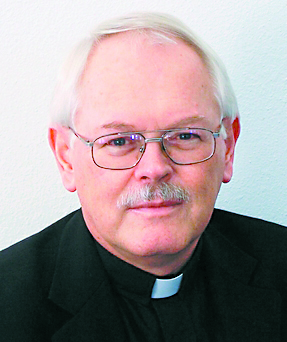
Monks have secrets worth knowing. The first secret we need to learn from them is the central place of ritual is sustaining a prayer-life. Monks pray a lot and regularly, but they never try to sustain their prayer on the basis of feelings. They sustain it through ritual. Monks pray together seven or eight times a day ritually. They gather in chapel and pray the ritual offices of the church (Matins, Lauds, Prime, Terce, Sext, Vespers, Compline) or they celebrate the Eucharist together. They don’t always go there because they feel like it, they come because they are called to prayer, and then, with their hearts and minds perhaps less than enthusiastic about praying, they pray through the deepest part of themselves, their intention and their will.
In the rule that St. Benedict wrote for monastic life there’s an oft-quoted phrase. A monk’s life, he writes, is to be ruled by the monastic bell. When the monastic bell rings, the monk is immediately to drop whatever he is doing and go to whatever that summons is calling him to, not because he wants to, but because it is time, and time is not our time, it’s God’s time. That’s a valuable secret, particularly as it applies to prayer. We need to go pray regularly, not because we want to, but because it’s time, and when we can’t pray with our hearts and minds, we can still pray through our wills and through our bodies.
Yes, our bodies! We tend to forget that we are not disincarnate angels, pure heart and mind. We are also a body. Thus, when heart and mind struggle to engage in prayer, we can always still pray with our bodies. Classically, we have tried to do this through certain physical gestures and postures (making the sign of the cross, kneeling, raising our hands, joining hands, genuflection, prostration) and we should never underestimate or denigrate the importance of these bodily gestures. Simply put, when we can’t pray in any other way, we can still pray through our bodies. (And who is to say that a sincere bodily gesture is inferior as a prayer to a gesture of the heart or mind?) Personally, I much admire a particular bodily gesture, bowing down with one’s head to the floor which Muslims do in their prayer. To do that is to have your body say to God, “Irrespective of whatever’s on my mind and in my heart right now, I submit to your omnipotence, your holiness, your love.” Whenever I do meditative prayer alone, normally I end it with this gesture.
Sometimes spiritual writers, catechists, and liturgists have failed us by not making it clear that prayer has different stages – and that affectivity, enthusiasm, fervor are only one stage, and the neophyte stage at that. As the great doctors and mystics of spirituality have universally taught, prayer, like love, goes through three phases. First comes fervor and enthusiasm; next comes the waning of fervor along with dryness and boredom, and finally comes proficiency, an ease, a certain sense of being at home in prayer that does not depend on affectivity and fervor but on a commitment to be present, irrespective of affective feeling.
Dietrich Bonhoeffer used to say this to a couple when officiating at their marriage. Today you are very much in love and believe that your love will sustain your marriage. It won’t. Let your marriage [which is a ritual container] sustain your love. The same can be said about prayer. Fervor and enthusiasm will not sustain your prayer, but ritual can. When we struggle to pray with our minds and our hearts, we can still always pray through our wills and our bodies. Showing up can be prayer enough.
In a recent book, Dearest Sister Wendy, Robert Ellsberg quotes a comment by Michael Leach, who said this in relation to what he was experiencing in having to care long-term for his wife suffering from Alzheimer’s. Falling in love is the easy part; learning to love is the hard part; and living in love is the best part. True too for prayer.
(Oblate Father Ron Rolheiser is a theologian, teacher and award-winning author. He can be contacted through his website www.ronrolheiser.com.)
Prayer revitalizes the soul, pope says at Angelus
By Carol Glatz
VATICAN CITY (CNS) – Prayer is medicine for one’s faith and it reinvigorates the soul, Pope Francis said.
“We need the daily water of prayer, we need time dedicated to God, so that he can enter into our time, into our lives,” the pope said Oct. 16 during his Sunday Angelus address.
“We need consistent moments in which we open our hearts to him so that he can daily pour out on us love, peace, joy, strength, hope, thus nourishing our faith,” he said.
So often, people spend their day focused on many “urgent, but unnecessary things,” neglecting what counts the most in life, he said. “We allow our love for God to grow cold” bit by bit.
Prayer, he said, is the remedy to rekindle this “tepid faith.”
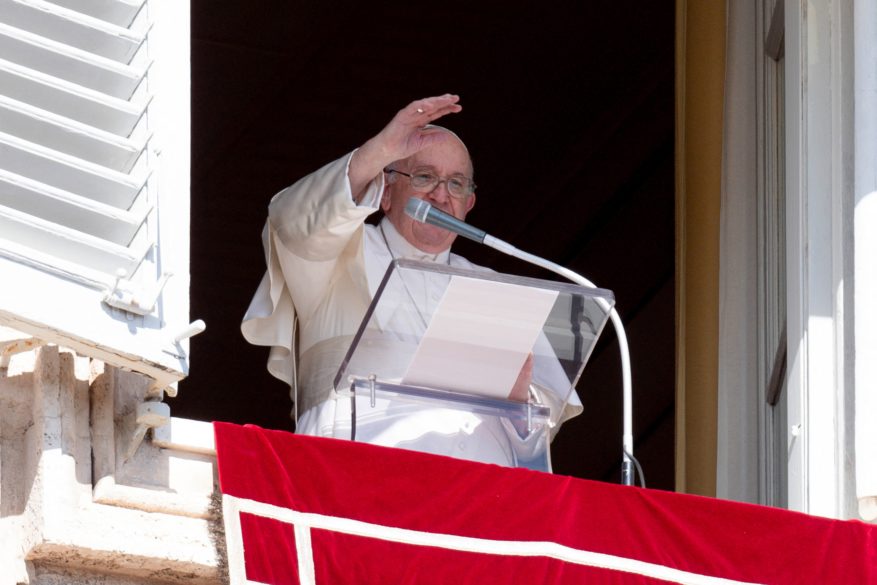
“Prayer is the medicine for faith; it is the restorative of the soul,” he said.
Just as a patient must “faithfully and regularly” take his or her medication, Pope Francis said, prayer, too, needs to be consistent and constant, not practiced in fits and starts.
In the Gospel of Luke’s parable of the persistent widow, Jesus is showing people that they must “pray always without becoming weary,” he said.
When finding the time to pray is a real difficulty, he said, busy people should turn to an old but “wise spiritual practice” called “aspirations.” These are very short prayers in which the mind is directed to God and “that can be repeated often throughout the day, in the course of various activities, to remain ‘in tune’ with the Lord” so that “our hearts remain connected to him.”
For example, he said, as soon as people wake up, “we can say, ‘Lord, I thank you and I offer this day to you,’” or before beginning an activity, “we can repeat, ‘Come, Holy Spirit,’” and throughout the day, people can pray, “Jesus, I trust in you. Jesus, I love you.”
“And let’s not forget to read his responses” in the Gospel, the pope said.
“The Lord always responds,” he said, so people should open the Gospel “several times every day, to receive a word of life directed to us.”
Called by Name
Our Homegrown Harvest effort is working. Not only have we netted four new seminarians in the past year, but we have two men currently in the application process and one more who is in a pre-seminary online program that we offer to guys who are seriously considering a priestly vocation.
The health of a vocation department is not just quality and quantity of candidates; it’s also dependent on building up a good support system for all those who have a hand in promoting and supporting vocations. Here are some other initiatives that we recently ramped up with that in mind:
– We had our first ever POPS event on Sept. 24. The Parents of Priests/Seminarians/Sisters is an effort to support our parents who are supporting their children in discernment. The Knights of Columbus of the Cathedral of St. Peter the Apostle provided dinner. It was a great event. We are looking at doing a Christmas party in December.
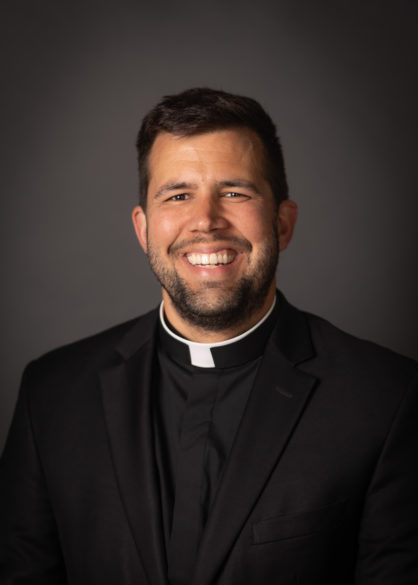
– I attended Southeastern Pastoral Institute’s Encuentro Regional (Regional Encounter Workshop) Oct. 12-14 to learn more about working with young Hispanic Catholics in our parishes and helping them discover their vocation. It was a great experience, and I enjoyed the networking and got some good ideas both for vocation promotion and parish best practices for Hispanic ministry. Bishop Kopacz and Faith Formation director, Fran Lavelle also attended this workshop which was held in St. Augustine, Florida.
– We hosted our first ever Bethany Night in mid-October. This was a dinner, talk, and time of adoration for young women open to the call to religious life. Sister Karolyn Nunes, FSGM, was in town and so I asked her to give a presentation to those who attended. Sister Karolyn is the vocation director for the Franciscan Sisters of the Martyr St. George, the same order that Kathleen McMullin, now Sister Mary Kolbe McMullin, entered last year. A great thanks goes to the Knights of Columbus from Holy Savior in Clinton for providing dinner and to this parish for hosting us. I also took Sister Karolyn to St. Joe High School in Madison to speak with two sections of Senior Theology, and that was a great time, the kids were full of great questions.
And our Homegrown Harvest Festival has brought in a record amount to go toward the tuition/books/fees for our nine seminarians. Thank you all for the trust that you have placed in the Lord as we have made a call for support of our men in formation and thank you for you the encouragement you continue to give to young men to consider the call to the priesthood and young women to consider the call to religious life.
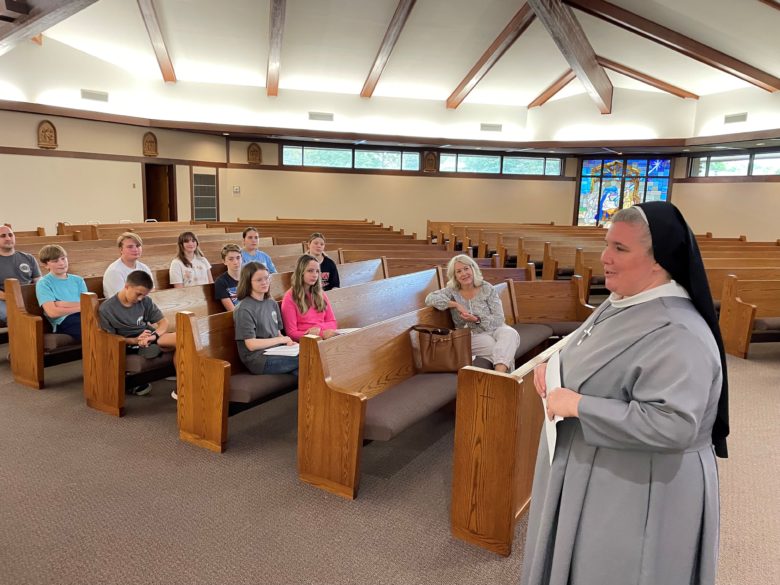
Deacon provides thoughtful explanation of Christ’s real presence
By Mitch Finley
“For Real? Christ’s Presence in the Eucharist” by Deacon Dennis Lambert. Liguori Publications (Liguori, Missouri, 2022). 182 pp., $16.99.
In some Catholic circles – especially academic ones – the term “apologetics” gets little, if any, respect. It’s true that some efforts at apologetics are little more than Catholic fundamentalist attempts to prove “us” right and “them” wrong.
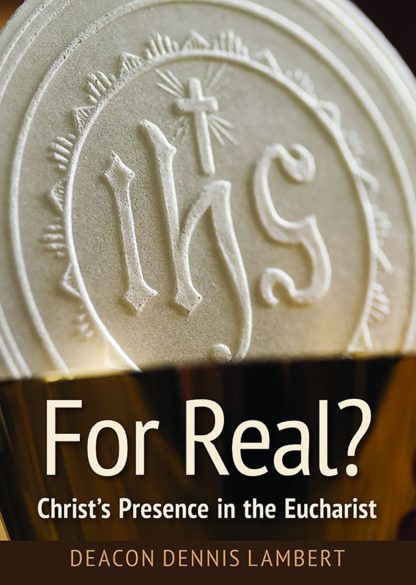
Yet, rooted in intellectually responsible Scripture studies and theology, apologetics can help Catholics to embrace a better, more adult understanding of their faith and cultivate an ability to explain it to others.
Dennis Lambert, a deacon in the Diocese of Phoenix, serves up just such an approach to apologetics.
In this case, Lambert’s focus is on the Catholic concept of “real presence,” a traditional term that sums up the Catholic doctrine – shared, in one form or another, by some mainline Protestant churches – that in the Eucharist the risen Christ is present, body and blood, soul and divinity, and therefore (to paraphrase the Catechism of the Catholic Church), the whole Christ is truly, really and substantially contained in the consecrated bread and wine of the Eucharist.
Motivation comes, the author explains in his book’s preface, from a 2019 Pew Research Center study that revealed that “more than one-third of all Catholics who attend Mass at least once a week ‘don’t believe that the Communion bread and wine actually become the body and blood of Christ.’”
Rather, they believe with many Protestant/evangelical Christians that holy Communion is “merely a symbol or remembrance of the Last Supper.”
At the same time, in the months just following the publication of the Pew study, more than a few theologians, liturgists and sociologists expressed their concern that the Pew study was not without its flaws.
Some objected to the ways the Pew study formulated its survey questions; others questioned the meanings the survey apparently took for granted for terms such as “symbol” and “sign.”
Lambert’s research is thorough and his insights helpful for anyone who would gain a better understanding of Catholic beliefs about the Eucharist and holy Communion.
His discussion of what both Old and New Testaments contribute to these beliefs is well done, as is his summary of the teachings of the early Fathers of the church on the topic at hand and his overview of official church teachings.
While insightful and clearly stated, one may hazard the opinion that Lambert’s book could have used a livelier, more creative style. Also, it would have been refreshing to learn a few things about some of the creative insights suggested by contemporary sacramental theologians.
For example, one Catholic thinker suggests that today’s educated adult believer may gain a deeper understanding of the real presence by supplementing “body and blood, soul and divinity” with “whole person of the risen Christ.”
The final chapter of this book, “Evangelizing the Eucharist: Sharing the Truth of the Real Presence,” is exquisite and powerful.
Readers both Catholic and otherwise will find “For Real?: Christ’s Presence in the Eucharist” worth reading slowly and thoughtfully.
(Finley is the author of more than 30 books on popular Catholic theology, including “The Rosary Handbook: A Guide for Newcomers, Old-Timers and Those In Between,” “The Joy of Being a Eucharistic Minister” and “The Joy of Being Catholic.”)
